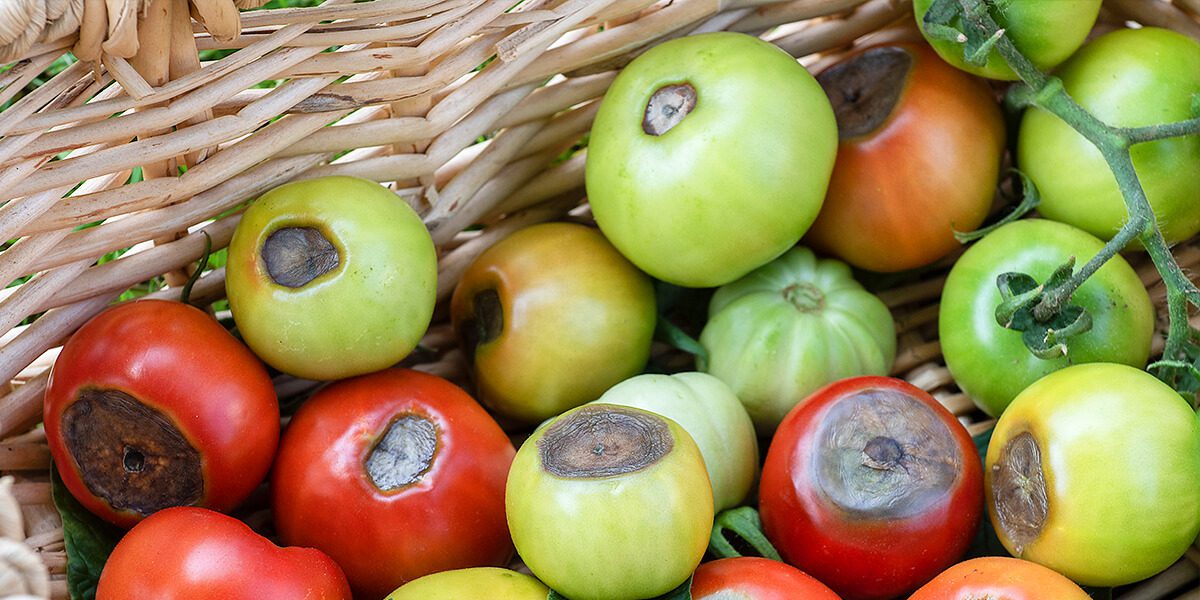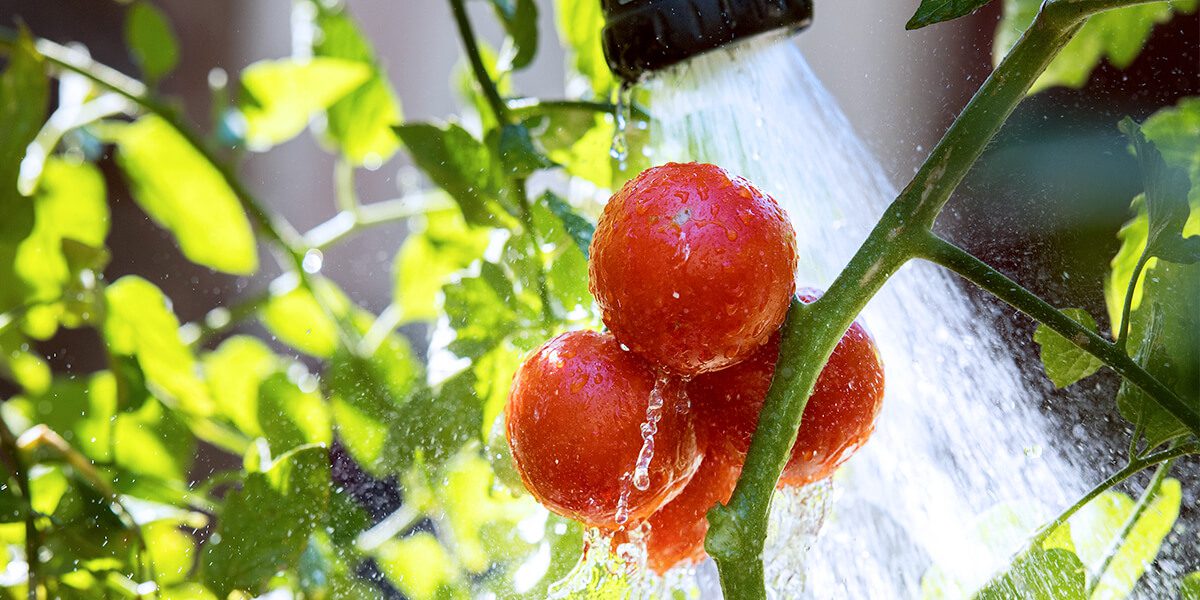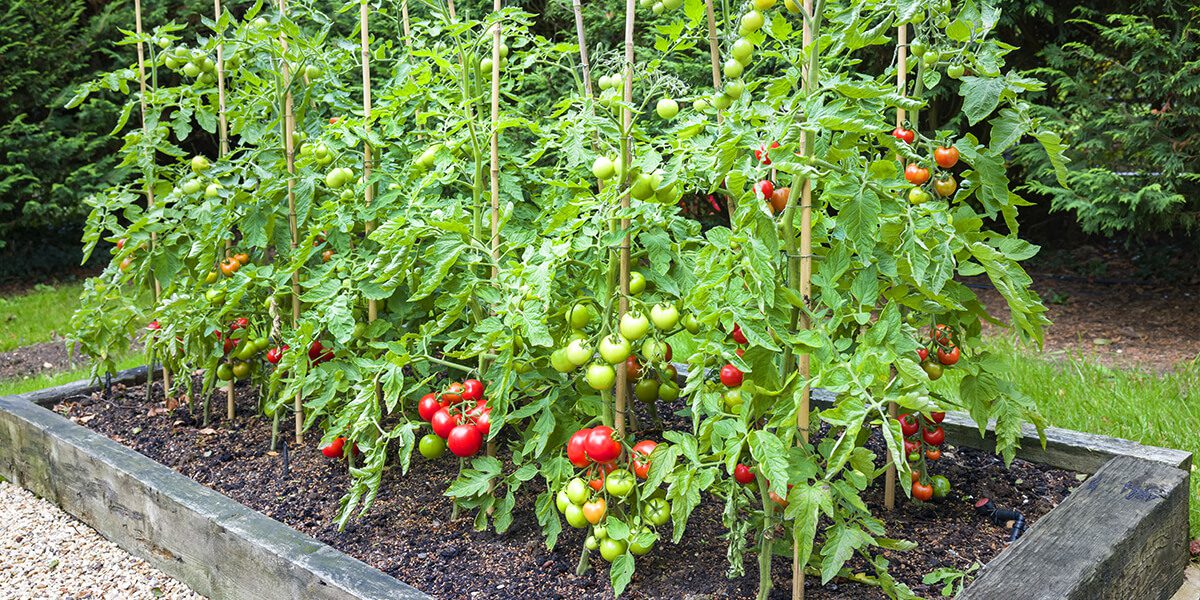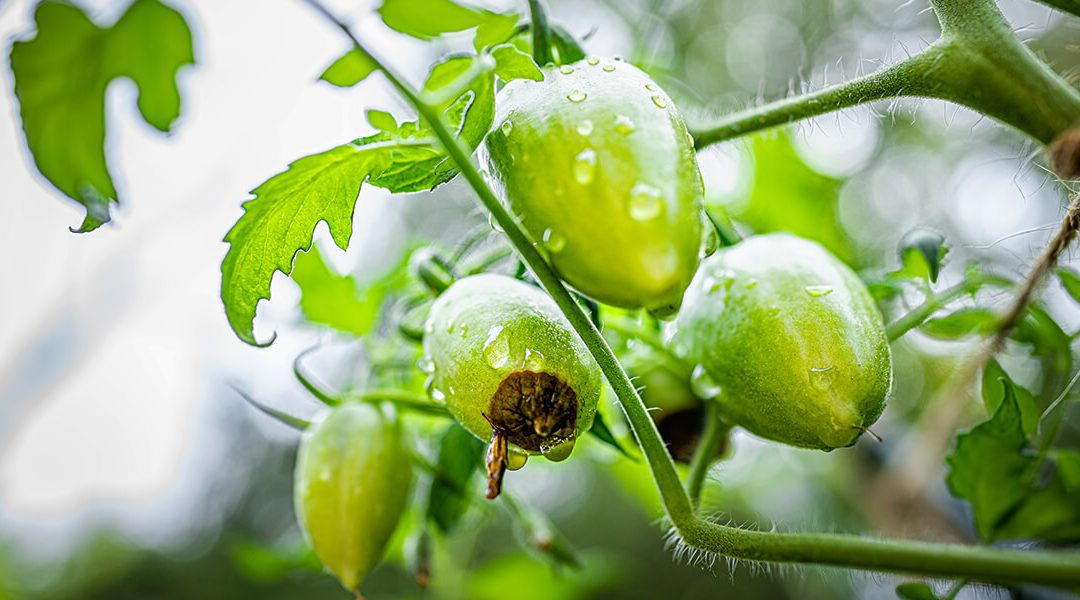What’s that black spot on the end of your tomatoes? It’s called blossom end rot, and contrary to appearances, it’s not a fungus or disease. It’s a condition caused by insufficient calcium uptake in your plants. It may affect squash, cucumbers, peppers, and melons, but most commonly affects tomatoes. Once observed, there’s no way to reverse it, but there are many ways to correct the calcium deficiency and prevent more fruit from getting end rot!
Inconsistent watering or a calcium deficit in your soil are the most common causes of end rot.

What Causes Blossom End Rot?
It happens when your tomato plant is not getting enough calcium during fruit development. But what’s preventing it from getting enough calcium?
- Your soil may have a calcium deficiency.
- Your calcium levels may be fine, but inconsistent watering, stress from heat or drought, or waterlogged soil may have prevented the plant from accessing it.
- Other factors, such as rapid growth from over-fertilizing, damage to plant roots, or improper soil pH may be responsible for your end rot.
How to Correct Blossom End Rot?
Once end rot forms on a tomato fruit, there’s no way to get rid of it. If the lesions are small, you can let the fruit ripen and simply cut off the end when it’s ready to eat. But even though those fruit won’t return to normal, you can prevent more tomatoes from getting end rot:

1. Consistent Watering
Maybe you’ve been too casual with your watering routine and let your tomatoes dry out while they were setting fruit. Or perhaps a hot, dry spell stressed them out. Whatever the cause, remember that tomatoes, and other fruiting vegetables, need steady watering. If you forget to water one week, don’t waterlog them the next. And be extra consistent with plants in containers, as they dry out more quickly.
2. Test Calciums Levels, and Adjust as Needed
If you’re using fresh soil, the calcium levels are likely good. But if your soil is tired and worn-out from intensive gardening, it may be lacking calcium. Test your soil to get confirmation and add a source of calcium as needed. Lime, bone meal, and finely crushed egg shells are good organic sources of calcium.

3. Check Soil pH and Correct as Needed
Inconsistent watering or a calcium deficit in your soil are the most common causes of end rot, but improper soil pH can also be a culprit as it influences the plant’s nutrient absorption. Give your soil a pH test. The ideal range for growing vegetables is 6.5 to 7.5. Add soil amendments as necessary.
4. Use a Tomato Fertilizer with Calcium
An ordinary fertilizer contains nitrogen, potassium and phosphorus, but these are not going to change the calcium levels. Instead, use a fertilizer for tomatoes that includes calcium.
5. Avoid Damaging the Roots
Cultivating or digging around a tomato plant can damage their roots and prevent proper water and calcium uptake, which can lead to end rot. Be mindful to keep the roots intact and undisturbed.
End rot doesn’t have to spell the end of your tomato season. You can’t save fruit that already has it, but you can help future fruit avoid it. Consistent watering, especially during fruiting, is the best way to prevent end rot. Besides that, ensuring your plants have healthy, balanced soil will give you the best chance for an abundant harvest. For more juicy tips, check out our blogs on vegetable gardening, and visit our garden centers in Chicagoland!
Platt Hill Nursery is Chicago’s premier garden center and nursery.


